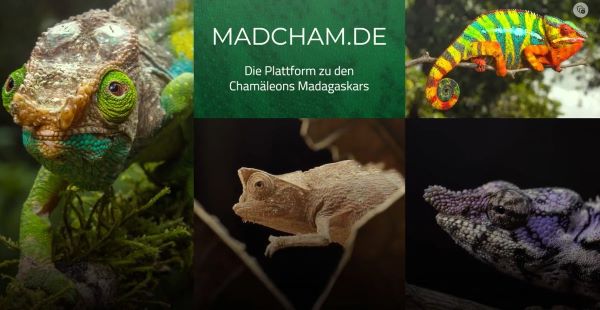Fantastic picture of our good friend, Mosesy (Tabatera!), training new guides in Bobangira (a beautiful private reserve north of Sambava). Mosesy is a wonderful person and we are happy to see him doing so well after recent ill health.


Fantastic picture of our good friend, Mosesy (Tabatera!), training new guides in Bobangira (a beautiful private reserve north of Sambava). Mosesy is a wonderful person and we are happy to see him doing so well after recent ill health.


A new genera in the Antongiliidae family of stick insects has just been described and comprises two new species (Anatispinosa elongata and A. tumidicollis), both of which were collected in Marojejy National Park.
This photo, taken by Éric Mathieu, shows a pair of A. elongata. Link to the paper and more photos: Description d’Anatispinosa (researchgate.net).
Kudos to the hardworking field researchers conducting these important surveys in and around Marojejy!
More upgrades to Camp Marojejia.
Illegal logging of rosewood from the rainforests of northeastern Madagascar continues…
https://www.malina.mg/fr/maroantsetra-ou-le-palissandre-disparait-a-la-tronconneuse/
Maroantsetra: Where the Rosewood Disappears with the Chainsaw
Rosewood is the target of massive and illicit exploitation which has continued for several decades, financed by a network of local and regional traffickers. The law seems to have no effect on this rosewood mafia: the network is sprawling and aggressive.
The illegal harvesting of rosewood has continued and become even worse in 2022 with the use of sophisticated machines. Chainsaws now abound throughout the Maroantsetra district [just south of Marojejy, near Masoala National Park]: they have become the tools of choice for traffickers. Clovis Razafimalala, who chairs the Lampogno coalition of approximately ten environmental associations, is concerned that illegal logging is increasing through the use of these powerful tools: “In just one week, a logger can cut down up to 10 hectares of land.”

This little tree frog, which is found in northeastern Madagascar (likely including Marojejy), has been shown to be genetically distinct from populations found further south. It now is separated into a new species named Guibemantis pulcerrimus (“most beautiful Guibemantis”).
More information can be found in the journal Zootaxa abstract and in this Yahoo article.
Mini stars!
https://www.nationalgeographic.com/animals/article/smallest-frog-species-discovered-mini-mum

Misaotra betsaka! Many thanks to the Lemur Conservation Foundation and all the people who are working so hard to make this happen!
A new report by the NGO, TRAFFIC, reveals that 64% of all protected species seized globally between 2000 and 2021 came from Madagascar. Species seized included rosewood, reptiles and amphibians that are critically endangered and prohibited from international trade.
According to Cynthia Ratsimbazafy, co-author of the study, “The figures reveal the long-term and sustained exploitation of Madagascar’s unique wildlife despite enforcement efforts and trade restrictions that have been in place for years. Madagascar’s biodiversity cannot survive this if the countries involved stop at just confiscating illegal shipments.”
TRAFFIC: An Assessment of Wildlife Trade Between Madagascar and Southeast Asia

Found: Mysterious songbird rediscovered in Madagascar after eluding scientists for 24 years
An expedition in the remote rainforests of northeast Madagascar has recorded Dusky Tetraka, an endemic to the country, for the first time since 1999. It was one of the top 10 most wanted species by the Search for Lost Birds collaboration, and its rediscovery marks an important step to helping protect it.

More photos of a new bungalow and the new shelters and viewing platforms at Camp Marojejia! Thank you!
Still so many species to discover: the example of frogs in Madagascar
Almost half of the 400 species of amphibians endemic to Madagascar have been described in just the past twenty years; last year alone, twenty new species of frogs were discovered. We have so much more to learn.

Videos of a trek up to Camp Marojejia. Some stunning footage of the park, the rainforest, the trail, chameleons and silky sifakas — well worth watching. Thank you, Alex Laube, for sharing!
Madcham.de Expedition blog – Tag 3 Sambava-Marojejy
Madcham.de Expedition blog – Tag 4 Marojejy
Madcham.de Expedition blog – Tag 5 Marojejy
Madcham.de Expedition blog – Tag 6 Marojejy
Madcham.de Expedition blog – Tag 7 Marojejy
Madcham.de Expedition blog – Tag 8 Marojejy-Sambava

Madagascar: Land of Fire
The Malagasy forest is burning and its destruction is accelerating, causing immeasurable damage to the environment. Agribusiness, ever hungry for more food, pushes farmers to burn more and more forest to plant their crops. It’s illegal, and yet it’s encouraged by elected officials.
Video in French
Thank you to the Lemur Conservation Foundation for funding new boundary signage.
An excellent summary of work being done in the Marojejy/SAVA area by Duke Lemur Center – SAVA Conservation.
A new study finds that the biodiversity that has already been lost in Madagascar will take three million years to rebuild, and if we lose all the currently endangered species, the recovery could take over 20 million years.
The reforestation NGO, Graine de Vie (Seed of Life), has been active in environmental protection in Madagascar for 14 years and has 322 tree plantations across the island, but is now reducing its activities here due to what it perceives to be a lack of support for environmental programs by the Malagasy government.
Madagascar: the reforestation NGO Graine de Vie reduces its activities and raises a cry of alarm
The year 2022 was a disaster for Madagascar’s forest reserves, which have been devastated by intentionally-set fires, even within parks and reserves that are protected by firebreaks.
Video: Graine de Vie Cry of Alarm
Frédéric Debouche, President of Graine de Vie Madagascar, describes the situation in this video (video in French).
The new magnum opus from Dr. Mark Scherz and colleagues describing frogs in the subgenus Brygoomantis:
Twenty new species of frog from Madagascar
Megataxa Journal: An inordinate fondness for inconspicuous brown frogs

Fantastic photos!